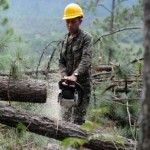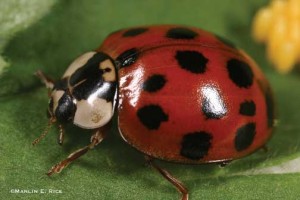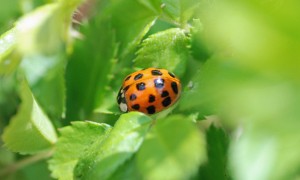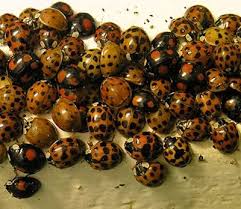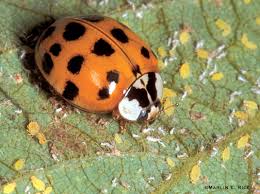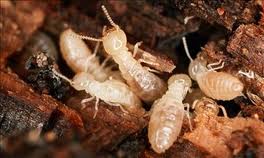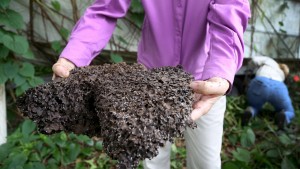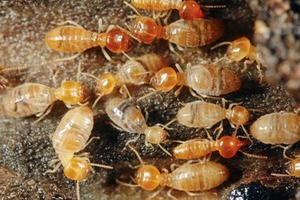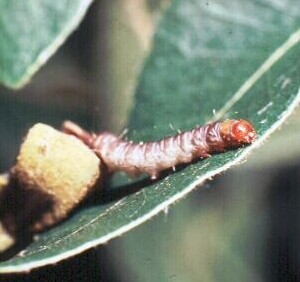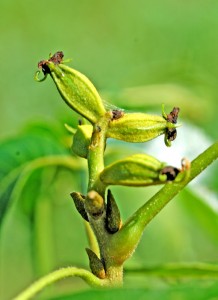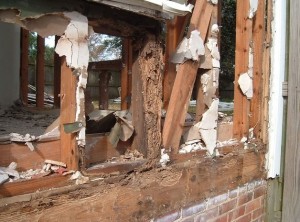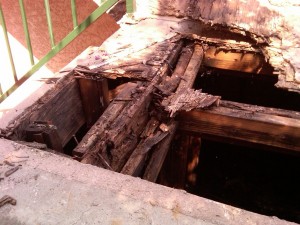Insects are the most diverse species found on earth. They can be found in places like desert, jungles, mines, caves, swamps etc. except the ocean. They are the most adaptable form of life. When these insects cause damage to our crops they become pests. Insect pests inflict damage to humans, farm animals, and crops.
Insect pests inflict their damage mainly by direct feeding on above ground or below ground plant parts. Insects with chewing mouthparts like a grasshopper, beetles cause feeding damage such as holes and cuts in stems, bore, and tunnel in plant tissues. They also cause injury to plants when they lay eggs in plant tissue. Some insect is also associated with transmission of plant diseases. Because of this infestation many plants die, many of them grow to be abnormal and nutrition deficient. Also in the storage area of crops, these insect pests contaminate feeding media through excretion, molting, dead bodies and their own existence in the product, which is not commercially desirable. Damage done by insect pests encourages infection with bacteria.
beetles cause feeding damage such as holes and cuts in stems, bore, and tunnel in plant tissues. They also cause injury to plants when they lay eggs in plant tissue. Some insect is also associated with transmission of plant diseases. Because of this infestation many plants die, many of them grow to be abnormal and nutrition deficient. Also in the storage area of crops, these insect pests contaminate feeding media through excretion, molting, dead bodies and their own existence in the product, which is not commercially desirable. Damage done by insect pests encourages infection with bacteria.
Provision of food has always been a challenge facing mankind. Most of the country’s economy depends on agriculture. Due to damage was done by insects, grains lose value for marketing, consumption, and plantation. Herbivorous insects are said to be responsible for destroying one-fifth of the world’s total crop production annually. This reflects the major loss to the economy of the agriculture and food industry. Indian agriculture currently suffers an annual loss of about US$ 36 billion.
Here is some news on how insect infestation has damaged the crops:
Insects feast on plants, endangering crops and costing billions
Behind the blossoming flowers and fields of fruit in the U.S. lurks a hungry threat that has crawled and eaten its way through much of the country. Sometimes, the menace infiltrates these places on the backs of unsuspecting hikers and travelers.
As summer approaches, swarms of invasive species—which the National Wildlife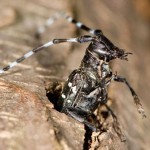 Federation refers to as “one of the leading threats to native wildlife”—are on a rampage. These organisms attack not just gardens, but also agriculture and the environment, costing the United States about $120 billion each year in damages, according to the Animal and Plant Health Inspection Service (APHIS), a division of the United States Department of Agriculture (USDA).
Federation refers to as “one of the leading threats to native wildlife”—are on a rampage. These organisms attack not just gardens, but also agriculture and the environment, costing the United States about $120 billion each year in damages, according to the Animal and Plant Health Inspection Service (APHIS), a division of the United States Department of Agriculture (USDA).
In Hawaii, a rhinoceros-looking black beetle is attacking coconut-bearing palm trees. The beetle was detected less than two years ago, but the Plant Industry Division of the state’s Department of Agriculture is already calling it a “serious invasive pest.” It is forcing officials there to deploy thousands of traps to capture them and even asking residents to check their mulch before discarding it.
Another bug in Hawaii also found in California is the light brown apple moth. It is a particularly hungry critter known to damage scores of crops such as avocados, grapes and raspberries, and thousands of plants and trees that include roses and eucalyptus. “It could expand its preferences as it is exposed to new plants and crops,” the USDA-APHIS warns.
– 9 May 2015, U.S. CNBC
Flea beetles, cutworms top list of insects bugging Manitoba farmers in 2015
“Insects didn’t take a massive bite out of Manitoba crops in 2015, but there were some nibbling problems caused mainly by flea beetles and cutworms,” says Manitoba Agriculture, Food and Rural Development entomologist John Gavloski.
Borers were also found in the stalks of some potatoes, edible bean and hemp this year. It’s not unusual to find corn borers in crops other than corn when populations are high or when the corn isn’t at the right stage to attract the borer, Gavloski said in an interview.
-27 November, 2105, Manitoba, Manitoba Co-operator
In Florida, the OJ crop is getting wiped out by an Asian invader
Florida oranges are threatened with destruction if scientists and the government can’t find a way to stop an Asian bug from spreading a tree-killing disease.
The harvest for the state’s signature fruit could plunge to 27 million boxes by 2026, according to an Oct. 21 report by the Florida Department of Citrus. That’s an 82 percent drop from 149.8 million boxes in 2005, the year the bacterium that causes Huanglongbing, better known as citrus greening, was found in southern Florida.
The disease is spread by the Asian citrus psyllid, a tiny winged insect, and there’s currently no known cure. Greening already caused industry-wide losses of $7.8 billion and more than 7,500 jobs in 2006 to 2014, the University of Florida estimates. – 24 November, 2105, Florida, Chicago Tribune
Pink bollworm a nightmare for Bt cotton growers
Most of the crop in Raichur district has been destroyed by the pest.
Farmer from Kadagamdoddi village in Raichur taluk, spent Rs. 2 lakh to cultivate Bt cotton on 15 acres that he had taken on lease. Before he could harvest the first round of yield, the entire field was destroyed by pink bollworm.
“I dread visiting my cotton field and seeing this devastation,” he told The Hindu on Friday. He is not the only farmer to face this problem. Another farmer who cultivated Bt cotton on 18 acres of land said the crop was destroyed by the pink bollworm. He incurred a loss of over Rs. 3.5 lakh.
Disheartening stories of Bt cotton farmers are unfolding across Raichur district, which is one of the major cotton growing districts in the State. The extent of loss is yet to be measured as no survey has been conducted. Cotton is cultivated on nearly 60,000 hectares of lands in the district, most of which is Bt cotton. Farmers started switching to the crop in big numbers in 2007-08 and there has been increase in acreage over the years since then.
-5 December 2015, Karnataka, The Hindu
Using toxic insecticides and pesticides to stop damage caused by insects is not an ideal solution. Insecticides and pesticides are designed to kill and because their mode of action is not specific to one species, they often kill or harm organisms other than pests, including humans. Also, the majority of insects are directly important to humans and the environment. For example, several insect species are predators on other harmful pests; others are pollinators, decomposers of organic matter or producers of valuable products such as honey or silk. Some can be used to produce pharmacologically active compounds such as venoms or antibodies.
C Tech Corporation can offer a solution to overcome this problem. Our product Combirepel™ is an extremely low toxicity and extremely low hazard and eco-friendly rodent aversive. Combirepel™ is available in the form of solid masterbatches, liquid concentrate and in lacquer form. The product is compliant with RoHS, RoHS2, and REACH and is FIFRA exempted. This product acts through a series of highly developed intricate mechanism ensuring that rodents are kept away from the target application.
The fencing and tree guards can be coated withCombirepel™ to protect the trees, shrubs etc. from the damage caused by the grey squirrels. The product can also be incorporated into agricultural films, greenhouse films, plastic mulches used on a large scale in the agriculture as well as horticulture sector in order to avoid damages caused by these squirrels to fruits and vegetables. Also, the products can be directly incorporated in the polymer matrix during processing of pipes and tubing. Combirepel™ does not leach out, thus there is no soil pollution. Groundwater reserves are also not polluted. Also the non-target beneficial species like earthworms, bees etc are not affected.
The product is compliant with ROHS, ROHS2, ISO, REACH, APVMA, NEA, EU-BPR, and FIFRA exempted.
Contact us at technical.marketing@ctechcorporation.com if you’re facing problems with rodents and get best remedies to combat the pest menace.
Also, visit our websites:
http://www.ctechcorporation.com/
http://www.rodrepel.com/
http://www.termirepel.com/
http://www.combirepel.com/
Follow our Facebook pages at:
1] https://www.facebook.com/Combirepel-411710912249274/
2] https://www.facebook.com/Termirepel-104225413091251/
3] https://www.facebook.com/Rodrepel-120734974768048/
Follow us on our Twitter pages at:
1] https://twitter.com/rodrepel
2] https://twitter.com/termirepel
3] https://twitter.com/combirepel


